Yerba mate is a traditional South American tea that contains a large amount of caffeine.
Locals view the tea as the national drink in Argentina, Paraguay, and Uruguay, and it is one of the most widely consumed beverages in the world.
However, there is a lot of research on this particular tea.
Some of this research is very promising, but some studies have found cause for concern.
This article examines the science behind yerba mate tea and takes a closer look at the benefits and concerns.
What Is Yerba Mate Tea?
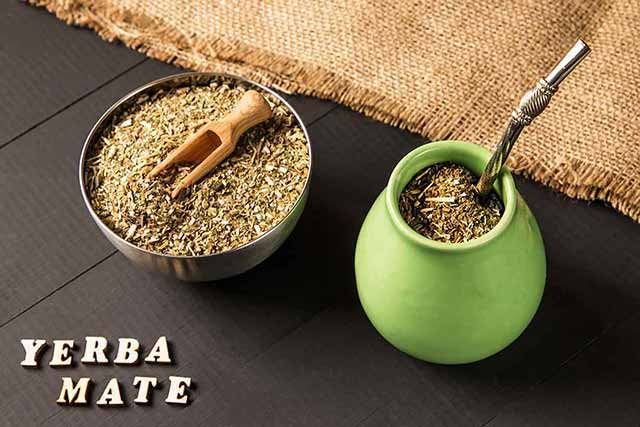
Yerba mate can also be pronounced as “yerba matè” (note the accent), and it goes by the common alternate name of chimmarão.
The tea comes from a plant, also called yerba mate, which is a species of holly (Ilex paraguariensis) (1).
Yerba mate grows in the subtropical rainforests of South America, and people use the plant’s dried leaves to make tea infusion. The method of brewing the drink is similar to green and black tea.
There is a lot of confusion about how much caffeine yerba mate contains, but studies show that typical consumer preparations contain about 78 mg caffeine per cup (2).
However, this can vary depending on the freshness of the leaves, and even the particular plant.
Generally speaking, yerba mate contains more caffeine than tea, but not as much as coffee.
How To Prepare Yerba Mate
There are several different ways to prepare yerba mate, and all of them provide a similar flavor;
1) Tea bag
Using a tea bag is the quick and easy way to consume a cup of yerba mate.
For anyone who has ever made a cup of tea, this should be straightforward.
All you need to do is drop a tea bag in a cup, add hot water, and allow to steep for 3-4 minutes.
2) Using a Calabash Gourd (the Traditional Way)
For a more exotic drinking style, the traditional South American way to consume yerba mate involves a calabash gourd.
Although this method may be lesser known, the equipment is simple to use.
A calabash gourd is a traditional container/cup for yerba mate, and people drink from it with a silver-colored metal straw known as a “bombilla.”
Cleverly, the lower end of this metal straw features a filter to block the tea leaves and fine particles from coming up.
If you are wondering what a calabash gourd and bombilla look like, here is a picture;
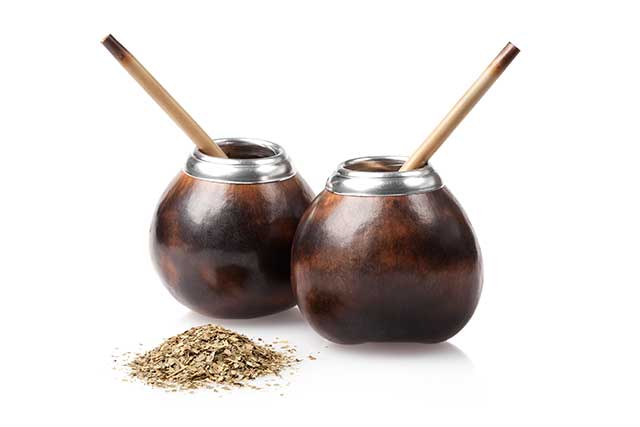
3) French Press
It is also possible to brew yerba mate using a French press in a similar way to coffee.
This method requires 3-4 minutes for the tea leaves to steep.
Health Benefits of Yerba Mate Tea
There has been a wide range of research on yerba mate over the past decade or so, and the tea has some interesting potential benefits.
1) May Improve Insulin Sensitivity and Blood Glucose Levels
Numerous studies suggest that yerba mate may play a role in increasing insulin sensitivity and regulating blood sugar levels.
In a recent trial, twenty-nine patients with prediabetes or type 2 diabetes were split into a yerba mate intervention or a control diet.
In the yerba mate group, participants drank three daily 330 ml drinks of the tea for 60 days.
Interestingly, at the end of the study, the results showed that the mate drinkers had significantly decreased fasting glucose and HbA1c (3).
Although there are no very long-term studies in humans at this stage, there are a variety of long-term animal studies.
Notably, these very long-term studies all show that long-term use of yerba mate decreases blood glucose and insulin levels, and increases insulin sensitivity (4, 5, 6).
2) A Rich Source of Polyphenols
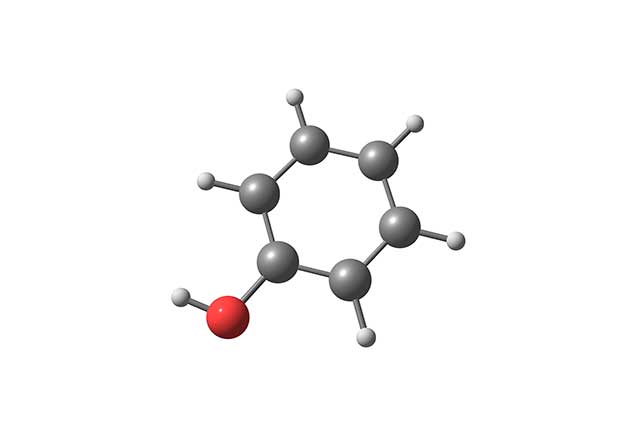
In a similar fashion to coffee and tea, yerba mate is also a significant source of polyphenols.
Among these polyphenols, flavonoids and phenolic acids are present in the most substantial concentrations, and the significant compounds are quercetin and chlorogenic acid (7).
Chlorogenic acid also occurs in coffee, and it is one of the most bio-available polyphenols.
Furthermore, systematic reviews and randomized clinical trials demonstrate that this compound can have vascular (blood pressure) and cognitive benefits (8, 9, 10, 11).
3) Yerba Mate Can Boost Energy and Physical Performance
As mentioned earlier, yerba mate tea is high in caffeine.
Containing approximately 78 mg per cup, this amount of caffeine can provide an energy and performance boost.
However, caffeine is not the only methylxanthine stimulant in yerba mate, and the tea leaves also contain theobromine and theophylline (12).
Each of these compounds has similar, but slightly different physiological effects. Studies show that yerba mate may improve physical performance;
- In a trial featuring well-trained cyclists, five grams of yerba mate per day improved time-trial performance compared to placebo (13)
- A randomized trial demonstrated that yerba mate supplementation increases fatty acid oxidation during exercise (14).
- In a further randomized trial, male and female adults took 1-gram of yerba mate 60 minutes before an incremental exercise ergometry test. Notably, fatty acid oxidation and energy expenditure increased by 24% compared to placebo (15).
4) May Boost the Immune System
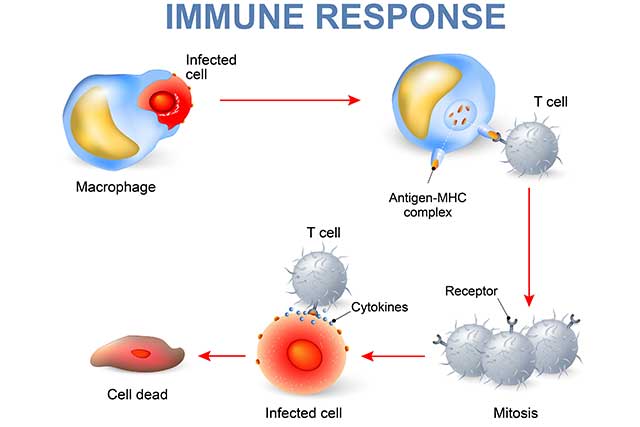
In addition to boosting exercise performance, yerba mate may also give our immune system a boost.
First of all, a human trial shows that a phytochemical found in yerba mate tea, saponins, can inhibit a pro-inflammatory response (16).
However, it is worth noting that these are extracts rather than the whole yerba mate leaves.
Furthermore, animal studies demonstrate that yerba mate has anti-inflammatory mechanisms and can suppress the production of pro-inflammatory cytokines (17).
That said, these are animal studies, which does not conclusively prove anything in humans, and better research on human participants is necessary to confirm.
Lastly, yerba mate is also a good source of antioxidant nutrients, notably vitamin C, E, and selenium (18).
5) Studies Show Weight Loss Benefits
While we shouldn’t expect too much from a herbal tea, various studies suggest that yerba mate may assist with losing weight.
Firstly, a randomized controlled clinical trial examined the effects of three grams of yerba mate per day.
Compared to a placebo group, those using the tea for 12 weeks decreased their fat mass, body fat percentage, and waist-hip ratio (19).
In a further randomized animal trial, yerba mate supplementation had anti-obesity and anti-diabetes effects (20).
6) Yerba Mate Appears To Improve Satiety Levels
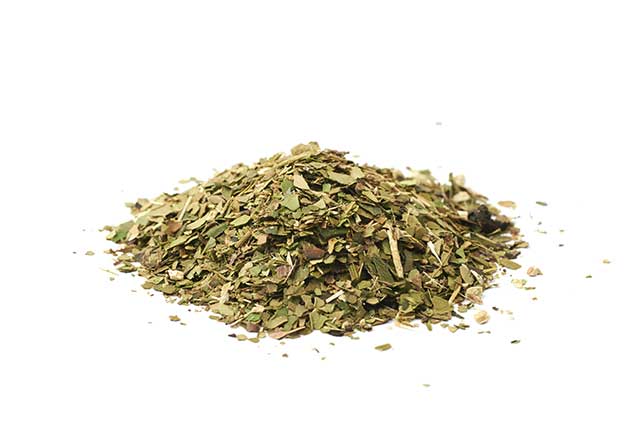
Interestingly, prolonged usage of yerba mate appears to increase glucagon-like peptide 1 (GLP-1) and leptin, which are both satiety hormones (21).
A further study in this area demonstrates that consuming yerba mate before exercise improves appetite control and measures of satiety (22).
Although often ignored, satiety is very important for weight loss.
It is correct to say that our overall energy intake matters, but not feeling the urge to eat certainly helps to accommodate this lower food intake.
7) May Help To Protect Cardiovascular Health
There are several ways in which yerba mate may promote cardiovascular health.
Being obese or overweight are both significant cardiovascular risk factors. Therefore, if the tea can assist with weight loss, that would be an indirect way of reducing cardiovascular risk (23).
Looking at observational data, we can see there are far fewer diagnosed cases of cardiovascular disease in heavy yerba mate drinkers. However, there are many potential confounders here, and correlation does not equal causation (24).
More promisingly, a randomized controlled trial found that yerba mate improved blood flow in patients with high blood viscosity.
In 142 study participants, five grams of yerba mate per day for six weeks saw nearly all blood values improve to a level indicative of someone with normal microcirculation (25).
Once again, yerba also contains the polyphenols quercetin and chlorogenic acid, both of which are associated with cardiovascular benefits.
8) Yerba Mate Likely Has Mood Benefits

Likely due to the caffeine content, yerba mate may have mood-enhancing benefits (26).
Although there is not a lot of research in this area, it is well-established that caffeine can have a significant effect on positive mood (27, 28).
However, there is one study that looked at yerba mate specifically, and it found the tea to have a positive impact.
In this randomized trial, consuming two grams of yerba mate improved feelings of positive mood (29).
9) Yerba Mate Has Anti-Bacterial Properties
One further benefit of yerba mate is that it has anti-bacterial properties.
For instance, yerba mate shows antimicrobial activity against pathogens in food like listeria, salmonella, and E. coli (30, 31).
Concerns and Side Effects
Although there is nothing too concerning, there are some negative findings on yerba mate to be aware of.
1) Does Yerba Mate Increase Cancer Risk?
Anyone who enjoys yerba mate may have concerns over studies proclaiming a possible link to esophageal cancer.
To be precise, one of the reported findings was that drinking more than one liter of mate tea per day, at a boiling temperature, triples the risk of esophageal cancer (32, 33).
However, it is important to note two things about these studies;
- First, correlation does not equal causation. Perhaps it was the yerba mate tea causing the increased cancer risk, or maybe it wasn’t. We have no way to confirm the link.
- Secondly, it might not be the actual choice of drink that is damaging to the throat. It is not unreasonable to think that boiling temperatures are bad for the throat.
Also, the World Health Organization confirmed that hot temperature drinks can be an issue in 2016.
Based on more than 1,000 studies, the group’s researchers found that drinking any beverage at temperatures above 149°F (65°C) “is probably carcinogenic to humans” because it potentially damages the cells within the throat (34).
Traditionally, South American people drink yerba mate at extremely hot temperatures, which could be the issue.
2) Caffeine Sensitivities
Since yerba mate is relatively high in caffeine, there is a possibility that some people will experience issues relating to caffeine sensitivity.
Our genes determine our level of caffeine sensitivity, and while some people can drink coffee all day, others struggle with even a few sips (35).
Potential symptoms of too much caffeine include anxiety, dizziness, and lightheadedness (36).
Final Thoughts
Overall, yerba mate is a healthy tea option that offers some interesting benefits.
Providing it is consumed at a sensible temperature, all the evidence points to yerba mate being a healthy choice.
Alongside drinks like matcha green tea, yerba mate is also a great alternative to coffee for those who are looking for something slightly lower in caffeine.
Looking for more herbal tea options? See this article for a review of hibiscus tea.


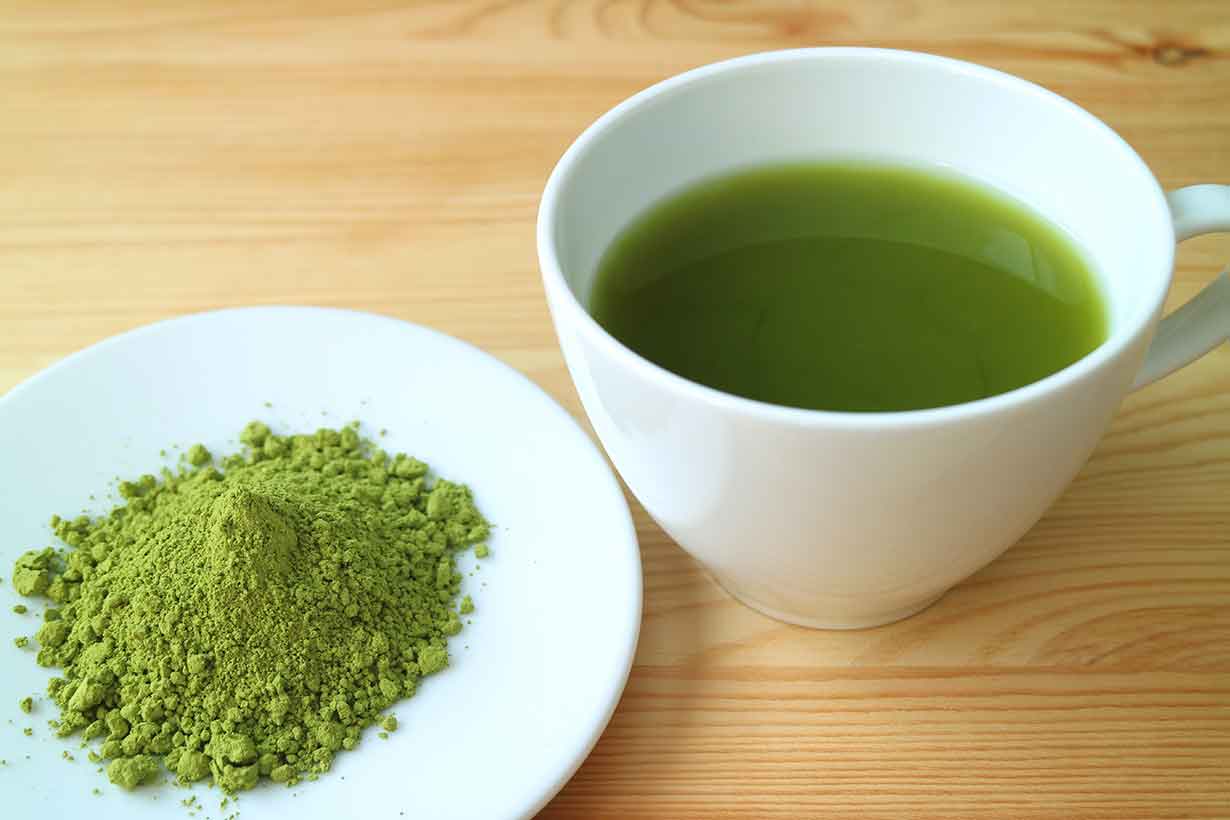
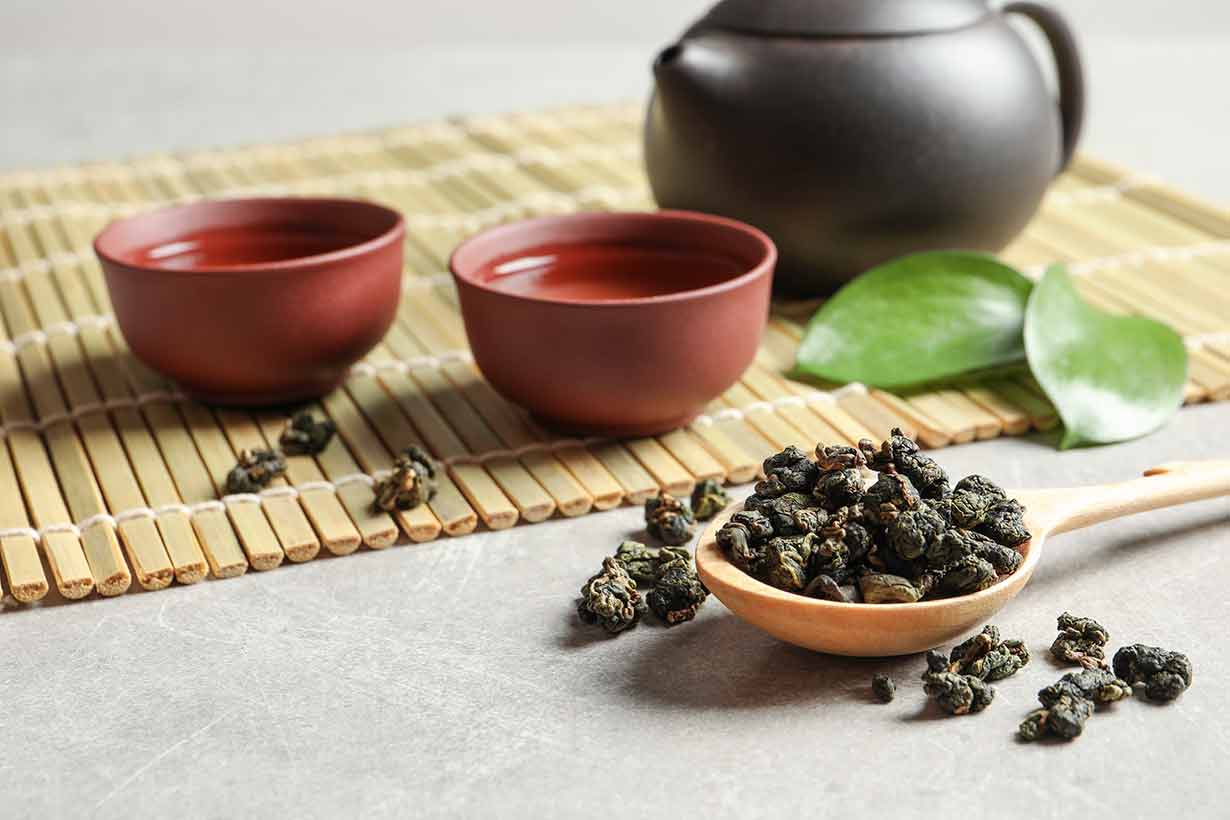
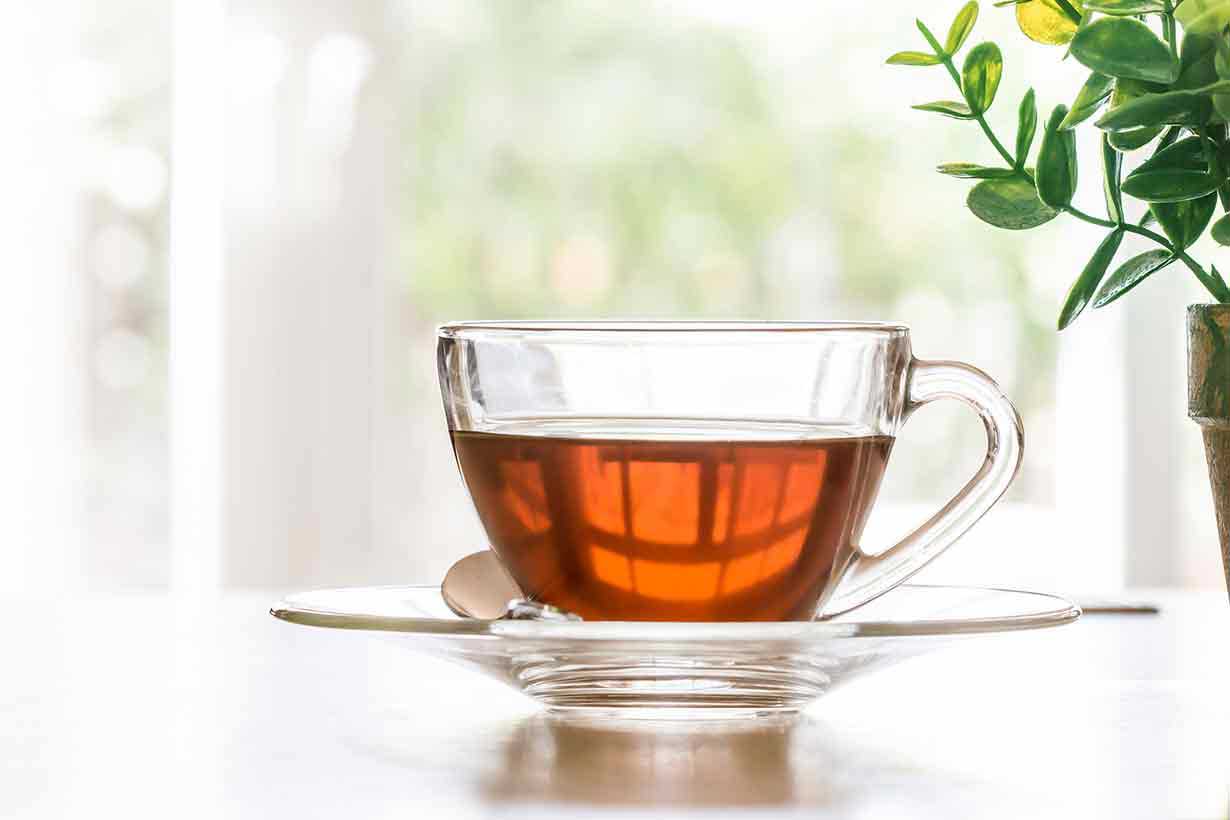
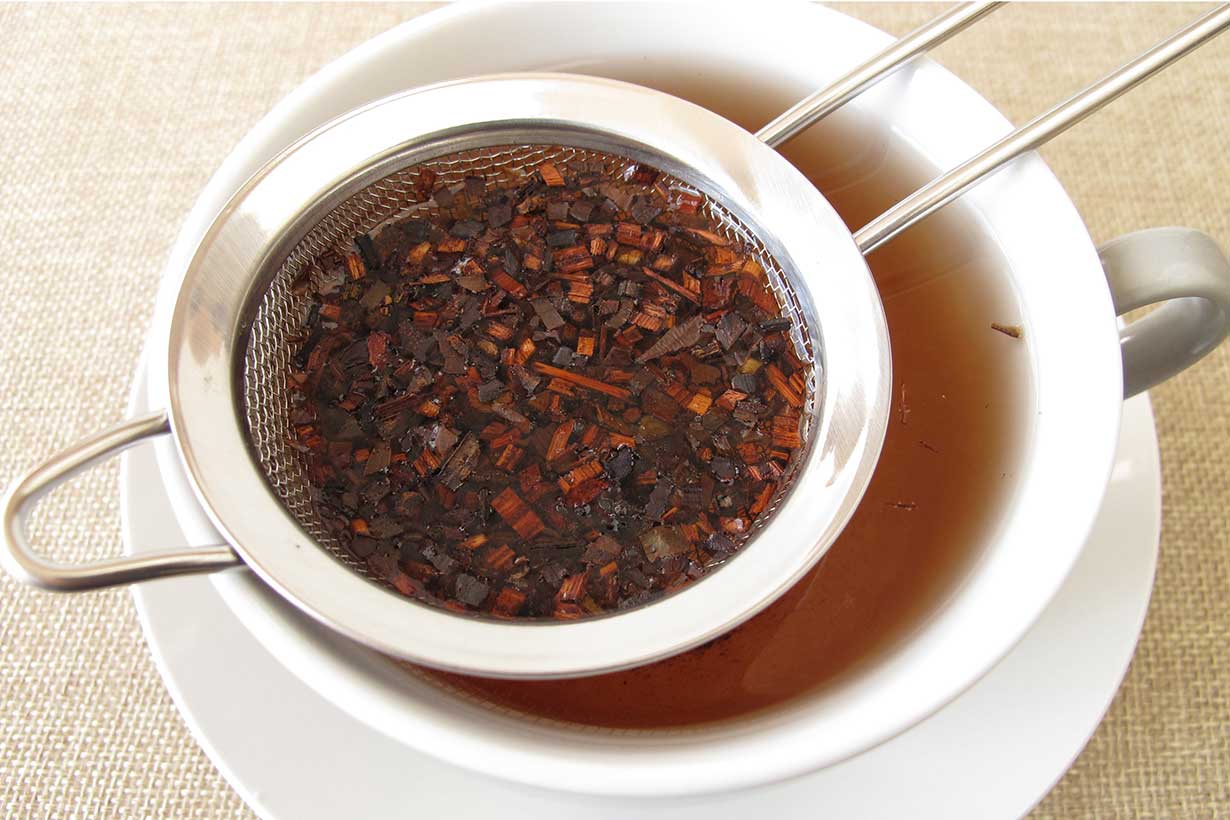
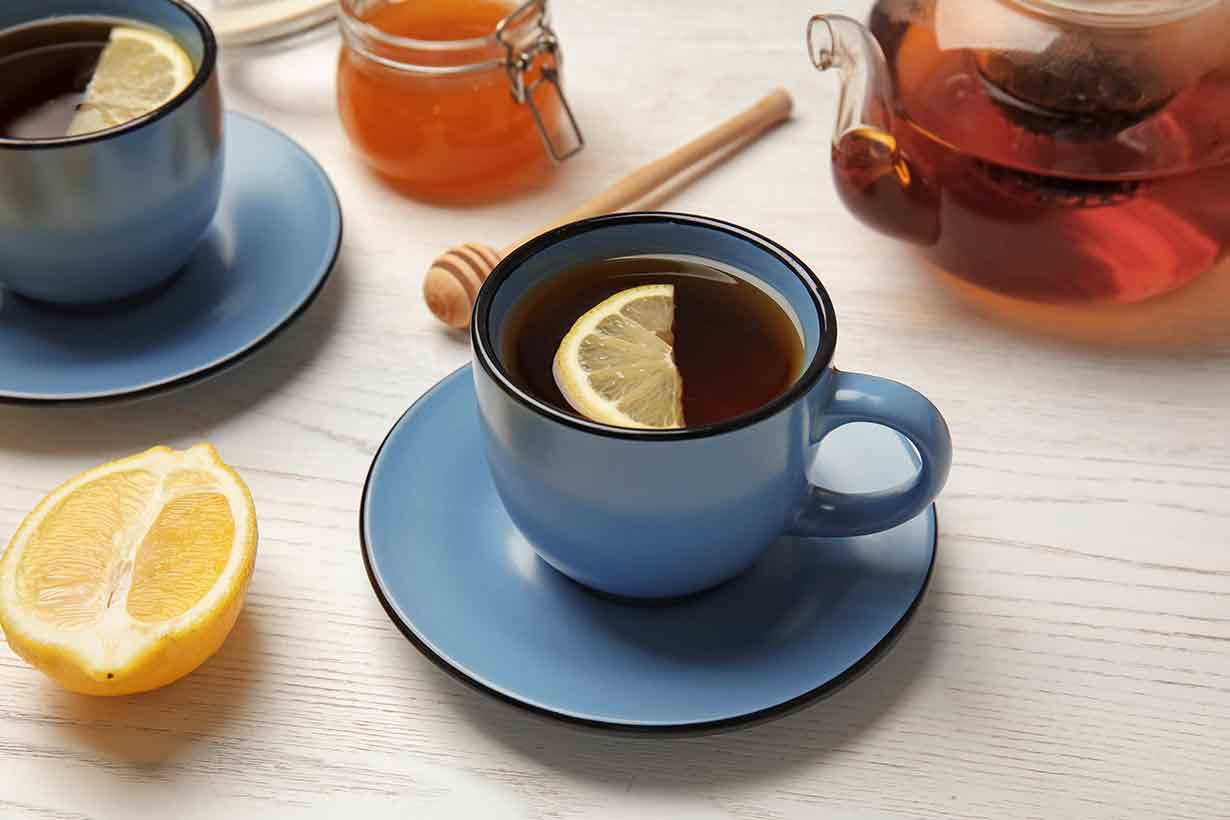
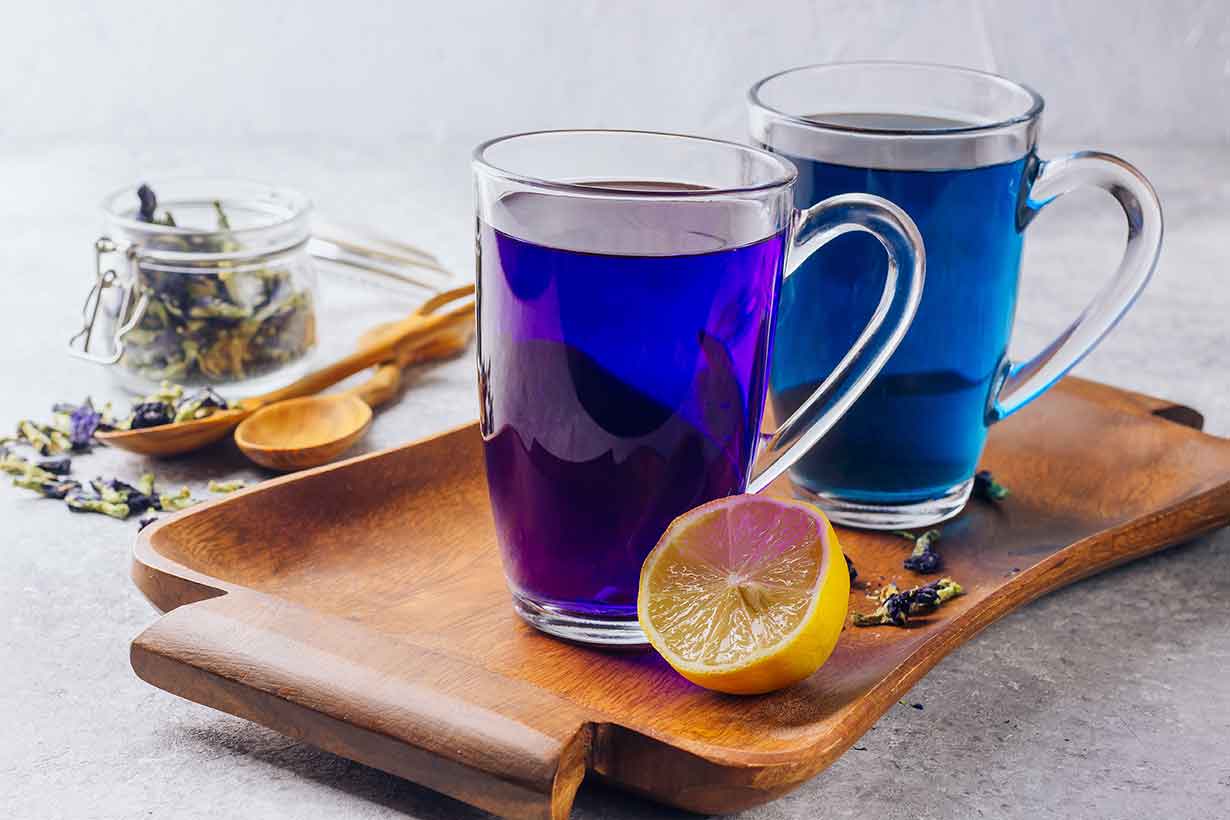

Got t2 diabetes in 2003. Since then, I have been drinking mate every day, no more than 4 cups. I have more energy than before using mate. I was introduced to mate while living in Uruguay back in 1965. Then, after returning to the USA, found that it was almost impossible to buy in the US until the last 20 years. Now I can buy online or at a higher price at the local market. Don’t drink coffee – coffee gives me the shakes.
Yes, some people don’t do so well with coffee. I enjoy it personally, but I can’t drink the amount some people do without feeling too wired. Yerba mate is great.
149 degrees Fahrenheit or Celsius?
149 degrees Fahrenheit (approximately 65 degrees Celsius).